

Letter from the Editor
“Fit Like?” is a common greeting in the small part of the world I come from. Used to both literally say hello and ask how somebody is, the common answer is simply repeated back. It’s not unusual to hear chants of “Fit like?”, “Fit like!” in the offices in the morning, in small bakeries on the way to work and even (increasingly rarely) among schoolchildren. Take just a small step out of that wee Scottish bubble and most folk wouldn’t know what you were talking about, let alone how to respond.
We all speak our own English. There are small differences here and there, for sure. I’ll die on the hill that colour has a “u” in it and that aluminium has more than one “i”. You might call flip flops “thongs” and somebody else might call a petrol station a “petrol bunk”, but it’s still all English. More than 9000 miles (15,000 km) from my small Scottish town, friends call out “Fit like?” to me when they remember.
These differences in dialect may sometimes cause inconvenience, but they bind us together. Estimates suggest as many as 30 million people in Japan speak English. That may be an optimistic number,

it’s undoubtedly true that this common language opens us to new ideas, possibilities and learnings that we may have otherwise never experienced.
It’s on that basis that CONNECT has tried to reinvent itself over the years. We’ve taken it upon ourselves to be a voice of the English-speaking community in Japan. Coming from humble roots as a JET Programme-affiliate magazine, we’ve tried to take it on ourselves to represent the wider community.
Inside, you’ll find our first major effort at tackling that. The next few months will be incredibly transformative. Who knows where things will end up? In the meantime, we hope that you’ll stick along for the ride and see what there is to offer.

Mike Taylor Head Editor of CONNECT Magazine

CONNECT | Development
Careers
7 From ALT to Eikawa Owner: A Look Into Starting a Business in Japan
CONNECT | Outdoors Entertainment
13 So You Want to Play a Game, Eh? Borderlands 4 Review Travel
17 From Idaho to Hakone: How TikTok Helped Turn Old Photos Into New Memories
21 Shizuoka Sencha: Leaves Steeped in Tradition Wellness
25 The Secret Life of Bentos
CONNECT | People Community
31 Voices of Harmony: Tokyo’s First Bilingual Choir Creates Community
& Credits Content
HEAD EDITOR
Mike Taylor
connect.editor@ajet.net
ASSISTANT HEAD EDITOR
Brooklyn Vander Wel
connect.assistanteditor@ ajet.net
ADMIN ASSISTANT
Diane Yett
connect.adminassistant@ ajet.net

HEAD DESIGNER
Renee Stinson visualmedia.connect@ajet.net
ASSISTANT HEAD DESIGNER
Taylor Sanders connect.assistantdesigner1@ ajet.net
This magazine contains original photos used with permission, as well as free-use images. All included photos are property of the author unless otherwise specified. If you are the owner of an image featured in this publication, please contact the Head Designer, Renee Stinson, at visualmedia.connect@ajet.net This edition and all past editions of CONNECT can be found online at https://connect.ajet.net/category/online-issues/ or on our website. Read CONNECT online and follow us on ISSUU.
WRITING TEAM
Kimberly Matsuno
Marco Rice
Chantal Gervais
John Megow
Tori Kusukawa
Maritza De La Peña
Jackie Husted
Alayna Blaylock
Úna O’Shea
ASSISTANT DESIGNERS
Indy Inoue
Jessica Barton
Vaughn McDougall
WEB EDITORS
Joseph Coston
Nathan Vonderahe

COPY EDITORS
Kaitlin Stanton
Brianne Dy
SOCIAL MEDIA
Taylor Hamada
Amari Stapleton
Vicanda Ma
PR MANAGERS
Jenny Chang
Daisy Thor-Poet CONTRIBUTORS
Alayna Blaylock
Taylor Hamada
John Megow
Maritza De La Peña
Mike Taylor
Development

CAREERS EDITOR
Kimberly Matsuno
CAREERS DESIGNER
Jessica Barton
CAREERS COPY EDITOR
Brianne Dy
From ALT to Eikaiwa Owner:


A
Look Into Starting A Business in Japan

Transitioning from the JET Programme to founding a private English school, or eikaiwa, Jaclyn White demonstrates the necessary vision, the importance of community, and the challenges one might face when starting a business in Japan. After working as an ALT for five years, Jaclyn moved to a small city—Noshiro,Akita—where she founded Enplay.
Maritza De La Peña (Nara)
English and Play
The name is a combination of the words “English” and “play.” “It’s about making English fun,” says Jaclyn. “I’m not here to make them fluent in English, I’m here to start their English journey. Because if they remember, when they were younger, that English was fun, we did a lot of fun games and Jaclyn-sensei was really cool, then they’ll want to learn English when they’re older.”
This model for learning English helps distinguish Jaclyn’s eikaiwa from others. In addition, as an American living in Japan and having worked with children in other countries, she uses her own experience to influence her English teaching. “You don’t need to know anything perfectly with language, it’s all about communication and communication is language, but it’s also a bunch of other things as well,” she explains.
It can be gestures, other body language, not saying the correct words and phrases but connecting the dots in between in order to be understood.
“I experience this every day in Japanese,” Jaclyn says. “So I think I could help kids get over that initial, ‘oh it’s not going to be perfect’. . . If I do figure it out with them and they see I figure it out, I think that gives them more confidence to speak and learn English.”


Connection and Communication
Jaclyn feels that a large part of her success thus far can be attributed to the community in Noshiro. This includes her husband who helped connect her with other community members and resources.
Additionally, she mentioned the local city hall, or shiyakusho, where she met someone contracted with the city who helps provide advice to those starting their own businesses. Through this free service, she was able to make an initial flyer and receive a lot of advice on how she should start and who she should talk to.
By meeting and connecting with other eikaiwa owners, Jaclyn was able to find an available building to run her business. Currently, she organizes events focused on intercultural learning together with another eikaiwa owner.
Other support that the city has provided includes continued advice and connections through workshops, as well as a grant that subsidizes half of Jaclyn’s rent for the next two years due to the eikaiwa being within a certain radius of the main train station.
Finally, when recruiting students, Jaclyn recommends reaching out to the local newspaper. More than half of her new students came from an article written about her first lesson at the school.
Ultimately, Jaclyn tries her best to help others in the community connect.
“I don’t just do eikaiwa, I have my name out in a bunch of other things. I took over an English club at a cafe once a week. I went to a Buddhist temple early on when I moved here and I talked to the monk and she likes to do a lot of events, so I started an English club. I also do an adult English night at Enplay—a speakingand-mingling, two-hour event twice a month.”
It can take a while to build up credibility, so showing up, connecting with people, and putting yourself out there is key for building success.

FirstYear Challenges
Any type of business is bound to have challenges, especially within the first year. For Jaclyn, a part of that is figuring out how to balance an ideal business model while still ensuring she is capable of making a living.
“I started this eikaiwa as a ticket system,” says Jaclyn. “I don’t think English should be a privilege. I think it should be available to whoever wants to learn this language. So, even if your family is busy, even if you can’t come every week, let’s start this English journey still. I have some students who only come twice a month or who are sick a lot, so they have to call out sometimes. If they pay monthly, their parents are wasting their money because

Her solution is: instead of a monthly fee, parents can purchase a certain number of tickets to be used whenever the students are able to attend a lesson. However, this is not as profitable.
“In principle, I really like this idea of the ticket system. It’s not the kids’ fault [if they can’t come and] I don’t think they should be deprived of English fun. I’m still trying to balance what I should do in the future. This whole first year is a trial to see what I like and don’t like, so the ticket system is something I really have to consider,” she explains.


“Making those contacts is really important. You can’t do it yourself, you will need those contacts. Because someone will know someone who will know.”
Parting Advice
When asked about giving advice, Jaclyn offered the following:
“First of all, thinking of the location of your eikaiwa is important. It’s important to research, find out how many eikaiwas there are in the area. I was lucky because there are no other native English-speaking eikaiwas here in Noshiro. It was a good market for me to have that start.”
Secondly, she highly advises to check the local town or city hall (yakuba or shiyakusho) for grants and other means of support.
“At least in my small city, there’s an area you can go where you can talk to them and they have all the information about grants and events. They might even have an English speaker on staff there.”
Ultimately, having a community of people, family, or friends willing to help out is key to making the process of starting a business a lot easier. “It’s all about meeting people in Japan,” she says. “Making those contacts is really important. You can’t do it yourself, you will need those contacts. Because someone will know someone who will know.”

You can find out more about Enplay on the Enplay website.

Maritza De La Peña currently lives in Nara Prefecture, where she often goes on walks to admire the archeological sites and rice fields near her home. You might also find her with a book in hand or excitedly staring out train windows.

Outdoors

ENTERTAINMENT EDITOR
Chantal Gervais
ENTERTAINMENT DESIGNER
Vaughn McDougall
ENTERTAINMENT COPY EDITOR
Kaitlin Stanton
TRAVEL EDITOR
Marco Rice
TRAVEL DESIGNERS
Indy Inoue
Jessica Barton
TRAVEL COPY EDITOR
Kaitlin Stanton
WELLNESS EDITOR
John Megow
WELLNESS DESIGNER
Taylor Sanders
WELLNESS COPY EDITOR
Brianne Dy
SO,YOUWANTTOPLAYAGAME,EH?

BORDERLANDS4 REVIEW
Mike Taylor (Ishikawa)
Borderlands 4 exploded into the forefront of the gaming world back in September in ways both good and bad. The 16-year-spanning series was in a massive lull after the critically-panned Borderlands 3 released in 2019.
The third entry in the series was heavily criticised for its cringe humour, lackluster story, and irritating characters.
Fans of the series were cautiously optimistic when publisher Gearbox Software announced they were taking the feedback on while developing Borderlands 4. Writing on Twitter in 2024, Narrative Director Sam Winkler insisted the developers were “cutting back on the toilet humour” compared to the previous entry in the series, adding, “[Author] Paul Tassi joked that we were gonna have a gun called Hawk 2A, and a fellow dev asked me if it was real and I wanted to put my hand down the sink grinder.”



And they seem to have mostly followed through: Borderlands 4 does serve as a relatively clean break from past entries. The game takes place entirely on a new planet, Kairos, which is split into four massive and distinct regions.
Previous characters in the series do make an appearance in the story, but not until the player has had a chance to explore and get a taste for the world on their own. Even then, their relevance to the story and relationship is explained quickly enough that a first-timer won’t be confused.
Exploration is where the series has made the biggest leaps, though. Grappling hooks and jetpacks may often be signs that a series is running on fumes, but they fit perfectly at home in Borderlands’ “high-tech, lo-fi” stylised settings. The physics of the game feels great, too. You grapple to propel yourself across the area, jet pack to steady as you gun down an enemy, then smash into the ground with a melee attack to literally turn the enemy into a bloody pulp.

were done.
It’s a simple yet satisfyingly gory gameplay loop. Long distance exploration has also become much more streamlined as players are quickly given a vehicle that can be summoned in most areas.
The small quality of life additions go a long way to making the game more fun. There are also dozens of captivating side missions that make straying off the beaten path worthwhile. One particularly poignant side quest features a sentient undetonated bomb desperate to find meaning in its existence.
Another mission takes the player on a walk down memory lane with Claptrap, the series’ intentionally annoying mascot. While this initially feels like it’s going to be a slog, the player character’s reactions to Claptrap’s dialogue makes the robot actually open up, develop, and let go of the past. There’s genuine love and effort from Gearbox and it really shines through in quests like these.



“Moving on” is a big theme of the game in both story and design philosophy. Kairos is new and there are extremely few references to Pandora, the main setting of the previous games. The ghost of Handsome Jack, the universallyacclaimed sarcastic and apathetic villain from Borderlands 2, has been exorcised.

In his place is the Timekeeper, an all-seeing immortal who rules over Kairos with his followers and can mind-control its denizens through
We are mostly shown his character through his routine check-ins to sneer at the player and how other characters in the rogue gallery react to his
The Timekeeper may not be the series’ best villain, but he does fit well into the setting and style of the game.
While this review has been generally positive about the game, there are a couple of CEO-sized elephants in the room.
First among them is the notorious performance issues which seem to have become a common feature of AAAgames on release these days. PC and console users alike have been plagued with crashes and framerate drops, which have made the game virtually unplayable for some despite meeting the game’s minimum system requirements. While it’s understandable that the sheer variety of PC setups can cause issues for some, the sheer volume of complaints is unprecedented.
Console players have even more justified gripes: the whole point of the console is that the game is optimised for the platform.



None of this has been helped in any way by Gearbox CEO Randy Pitchford. In a massive PR blunder, the head of Gearbox has taken to social media to argue with fans complaining about performance issues on the JPY 9,460 game, saying “Please get a refund from Steam if you aren’t happy” and has maintained that the game is “pretty damn optimal.” It’s the latest in a series of PR faux pas that Borderlands fans will be all too familiar with.
The boss had previously come under fire for defending the game’s price tag, saying “If you’re a real fan, you’ll find a way to make [paying for] it happen.”

Mike Taylor is a JET alumnus from Scotland now living in Kanazawa, Ishikawa. In his free time, he hurriedly rushes to prepare for upcoming Dungeons and Dragons sessions. The party can just get attacked by ninjas, right?
Pictures ©2025 Gearbox Software. Published by 2K Games.



Idaho From Hakone HowTikTokHelpedTurnOldPhotosIntoNewMemories






TaylorHamada(Kyoto)
WhenTrinitySattlerofIdaho,USA,firststumbledacrosshergreat-grandfather’s photographsandjournalentries,shecouldnothaveimaginedtheywouldleadher acrossanoceanandintoastorythatbeganmorethanseventyyearsago.What startedasarandomdiscoveryonFacebookturnedintoaTikTokinvestigationand,finally, aonce-in-a-lifetimetriptoJapan. Sattler’sjourneybeganwithafamilyFacebookgroupcalled“Pettipalooza”,aplacewhere fourgenerationsoffamilypostupdatesaboutweddings,Christmasparties,andmemories. Oneday,hergreat-uncleuploadedasmalltreasure:black-and-whitephotosandajournal entryhandwrittenbyhergreat-grandfather,formerUnitedStatesAirForceandAlaska Airlinespilot,E.T.Pettijohn.
“[The]postaboutE.T.andJapanwassocooltome,neverknowinghehadvisited...soI savedthephotos,”Sattlersaid.
In his journal, her great-grandfather recounted a two-week delay in Japan while he was working as a commercial pilot forAlaskaAirlines during the Korean War. He wrote of sightseeing, train rides, and steak dinners, all at prices that seem unreal today: seventy-five cents for lodging, five dollars for a full day’s taxi, and ten dollars for a luxury meal with change left over.



The five photos he left behind offered snapshots of that time: a water mill, E.T. with companions outside a building, a view of a building lined with cars, a developing city skyline, and a mountainous area with a woman in the foreground. But none of the locations were familiar to Sattler or her relatives.As she prepared for her upcoming trip to Japan with her husband, she hoped to retrace the places her greatgrandfather had once visited.



That hope led her to TikTok.



“I knew the only place I had a chance of finding these places was TikTok,” Sattler explained. “I have 5,000 followers, and just thought, why not? I have hope in the TikTok community and prayed it would reach the right audience to find it.”
Her first comments did not inspire confidence. “The first couple were quite sarcastic,” she joked. “like, ‘Oh, that’s right behind the. . .’or ‘It might be in Japan. . .’Although funny, I started to worry that my hopes were too far-fetched. . .”
But then everything shifted. Users began tagging creators who specialize in identifying places from small visual clues.
“[The] post about E.T. and Japan was so cool to me, never knowing he had visited. . . so I saved the photos,”
Some compared rooftops and mountains, and others turned to Google image searches andAI tools. Before long, the puzzle began to come together.
The water mill was located on the grounds of Fujiya Hotel in Hakone. The same hotel appeared in two other photos, showing its grand entrance and architecture. Ahazy city skyline matched early views of Tokyo, long before neon signs and high-rise buildings filled the horizon.
The golf course was identified as Sengoku, a lush retreat where E.T. once played and snapped a photo of the woman who unknowingly became part of their family’s story.





The online collaboration gave Sattler exactly what she needed before her departure.Armed with this knowledge, she and her husband traveled to Japan in September. Yet their timing brought unexpected drama.
“It was so surreal,” Sattler said. “It was in the middle of a typhoon, so [we] were soaking wet. . . my phone was barely usable with all the rain. The hotel staff were so kind. . . I was able to show them a photo of the waterwheel, and they directed us,” she recounted. “We ran through this beautiful hotel, dripping water, and out the back to the gardens. . . It felt almost like a pull to this waterwheel my great-grandpa once stood next to.”
That moment was deeply emotional. “I felt my grandmother, his daughter, although passed, her spirit filled me,” Sattler said. “[It] was such an exciting moment on both sides of this life and the next.”
Walking in her great-grandfather’s footsteps transformed the trip. She had read about his journeys on trains, buses, cable cars, and boats, and about the souvenirs he carried home: silk kimonos, ivory carvings, binoculars, and fishing poles. Now she could, even with decades between them, picture all of it more clearly.
For Sattler, the experience highlighted the value of both community and technology. “It just shows that keeping a record of your life is so important,” she reflected. “Your experience and your words are important for you and generations to come. . . Being able to now share these stories through technology is such a beautiful tool. . . To come together and create more stories and a greater connection between friends, family, and strangers.”
It is easy to think of TikTok as a place for dance trends, skits, and quick entertainment. Yet Sattler’s story shows that it can also be a bridge to the past. With the help of people she had never met, she was able to solve the mystery of her greatgrandfather’s photographs and give them new life.
Her adventure in Hakone and Tokyo is a reminder that history is not locked away in dusty journals or faded photographs. Sometimes it only takes curiosity, community, and a little modern technology to bring it vividly back to life.
Taylor Hamada, a former JET Program ALT, is a Kyoto-based tour guide and school teacher supporting students with non-Japanese roots. She spends her free time buried in books, exploring Japan, and drinking matcha lattes.

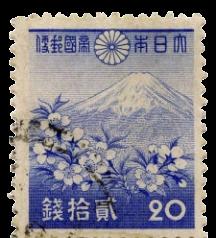

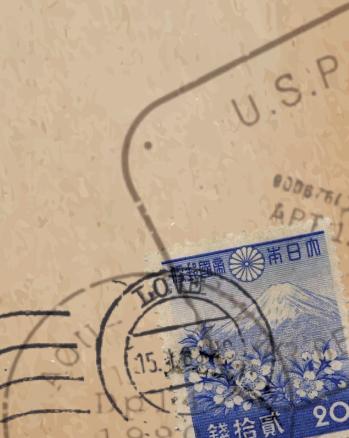

Shizuoka Sencha: Leaves Steeped in Tradition
Jackie Husted (Shizuoka)
If you’ve been to Shizuoka, you might know that it’s famous for green tea. Today, the prefecture accounts for nearly 40% of tea production in Japan. For Akito Ohashi, a native Shizuokan and tea tour guide, tea isn’t just a drink—it’s meditation, social connection, and, of course, business. But with more and more farmers aging out of the industry and a shrinking demand for loose leaf tea, what lies in the future for this region’s treasure?






Our Tea Expert
Akito takes visitors around the tea fields on his family farm, carefully explaining the region’s tea industry and sharing his personal experiences working within it. Even in the sweltering sun, he recounts his story.
Akito’s grandparents were tea farmers but, having no interest in the business as a young man, he moved to Yokohama to pursue a career in marketing. Around 10 years ago, however, he returned to his hometown with an American friend and showed her around his family’s farm. Through this, Akito felt a deeper appreciation for tea cultivation and realized the value in connecting with others to share it. He pulled back to his roots, he returned to Shizuoka to work as a tour guide and occasional farmer.
What’s the Deal with Shizuoka Tea?


Loose leaf tea can vary greatly depending on where it’s from.According toAkito, “Even if it’s the same sencha, the flavor can be really different depending on the area, farmers, climate, geography, and soil.”
With its warm climate and rich soil,fortified with volcanic ash from Mount Fuji,Shizuoka has fantastic tea-growing conditions. This has been well-known since the Edo period, when the prefecture was established by the Tokugawa shogunate as one of the nation’s prime tea producers.

Akito’s farm mainly produces sencha, the variety of tea most commonly consumed in Japan. Specifically, they make aracha, an unrefined farmer’s green tea, sold to wholesalers to finish processing and sell directly to consumers. They also produce small batches of loose leaf hojicha (roasted tea) and genmaicha (sencha blended with roasted rice).
All these teas, along with oolong, matcha, and even black tea, come from the same leaf—camellia sinensis. The difference is what happens in the time between harvesting and processing (a combination of steaming, roasting, and rolling). Though the leaf may be the same, tea can be wildly different depending on where it comes from. For Akito, sharing teas from different regions fosters social connection and appreciation for his home. He explains, “It makes me feel that tea from my region is special. I think in that way people around the world have the same mindset. It’s not like, this is good or bad. It’s just different, right?”


So, there are tons of brews out there. . . but what’s the best? Akito has a preference for cold-brewed sencha—it’s bright, citrusy, and refreshing: perfect for hot summer days. As an added bonus, cold brewing makes it lower in caffeine while boosting theanine, a stress-reducing compound.
As for drinking tea?Akito suggests nodate, a type of Japanese tea ceremony where tea is brewed outdoors, enjoyed in the peace of nature and conversation with good friends. Part tea ceremony, part picnic, it’s the laid-back cousin of the more formal ceremonies that Japan is famous for.
The Trouble with Loose Leaf
Unfortunately, the industry is not without its challenges. One of the biggest is the aging population of farmers. “The average age of tea farmers is 70 years old, and many of their children aren’t taking over the business,” Akito explains. It’s maybe the most pressing issue today, but it’s a symptom of bigger problems—the main one being profit.

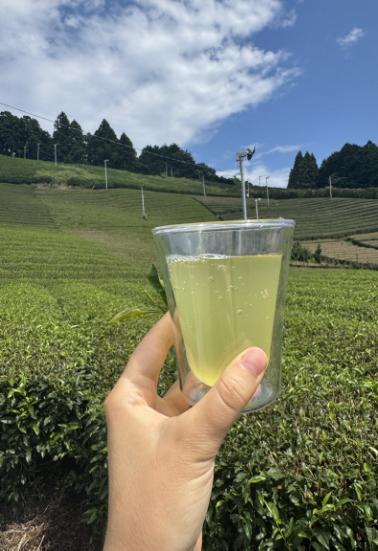
“Tea was profitable back in the ‘70s or ‘80s, so a lot of farmers started making tea,” Akito says. In recent years, however, consumers have moved away from using teapots, preferring tea bags or bottled tea for convenience.
“For farmers, it’s challenging because tea bags or bottled teas don’t use premium tea, so tea prices have been dropping drastically. . . In the last 15 years, we lost 30% of loose leaf tea [production].”And, although there is a growing international demand for tea, many customers prefer organic, which is costly to produce and yields only half the amount of standard methods.
Still, there’s hope. Akito has noticed a recent trend of people enjoying tea like “wine or specialty coffee,” such as single origin or single estate tea, giving rise to upscale tea shops and tastings in Kyoto and Shizuoka. Globally, recent Western food trends have created a nearly insatiable demand for matcha worldwide, giving Japan’s tea industry a much-needed boost.
In fact, Akito’s tea farm will convert entirely to matcha production starting next year. Producing the leaves is time- and care- intensive, making this decision an investment that depends on the hope that the current matcha craze will continue.

Slowing Down in a Rapidly Changing World


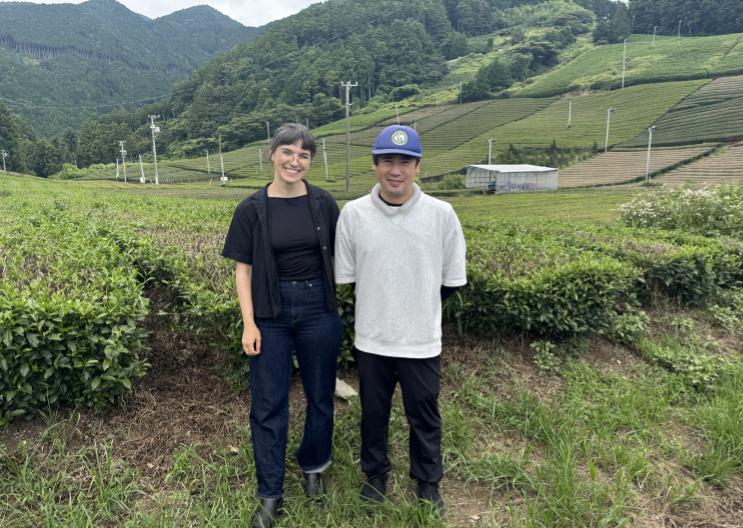
Can loose leaf tea keep up in modern markets? Only time will tell. Akito admits, “People consider tea an outdated drink.”
Matcha, with its instagrammable appearance and bold flavor, is well-suited for today’s lightspeed consumer culture. Loose leaf brews have a much more subtle depth of flavor, on the other hand. These teas take a bit more time and patience, two things admittedly hard to come by in today’s attention economy. Yet, arguably, therein lies the charm of loose leaf—and a small but growing number of consumers agree. In time, markets like this could protect the traditions of farms like Akito’s, and, in turn, sustain the future of tea cultivation in Japan.






Husted is a JET ALT based in Shizuoka. She loves cafes, birds, and going off on tangents just to see how far they can go.


Jackie



TheSecret

There is something special about opening a bento in Japan. The moment the lid lifts, you see neat rows of food tucked inside: bright vegetables, golden omelets, shiny rice grains. Each box feels like more than lunch. It carries care, comfort, and creativity all in one.
For one ALT, bento became the answer to a problem she had not expected. In her first year, she joined her students for kyuushoku, school lunch. It was fun at first: sharing the same meals with students, tasting new flavors, and enjoying the sense of community. But after a while, the afternoons grew difficult. She often felt too full, sometimes even sick, and found herself arriving late to class.
At first, she thought the portions were simply too big. Eventually, she realized her body was reacting to food sensitivities. The solution was simple: bring her own bento to school.
What started as a necessity soon became a daily ritual. The night prior, she packed exactly what she needed: non-acidic foods, gentle proteins, and just enough rice. Instead of worrying about how she would feel, she could look forward to lunch. Her students and coworkers noticed too, leaning over to peek and ask, “What’s that?” or “Did you cook it yourself?” Her lunchbox had become a conversation starter, one more way to connect across cultures.
Of course, there are many reasons why teachers bring their own meals, and the benefits go beyond health. Some enjoy arranging colorful boxes, while others simply pack leftovers before rushing out the door. Both approaches work just as well.
WhyBringa Bento?
1. Some schools do not provide lunch.
2. Food sensitivities or allergies make school meals difficult.
3. Portion control is easier when you prepare your own.
4. Packing lunch saves money over time.
5. Homemade food offers comfort and familiarity.
6. You can plan meals around your personal health goals.
7. Reimagining leftovers so they don’t go to waste.
Here are a few snapshots from current and former JETs, to possibly serve as “bento inspo” for your own lunchtime ideas:
“I make bentos for my husband (and coworker) to enjoy during summer vacation and other long breaks when school lunch isn’t provided to us.”

Three flavors of rice: Salmon, shiso, and soy sauce. Umeboshi, bacon-wrapped asparagus, pan-fried sausage, rolled omelette, leftover pasta, mackerel, candied sweet potatoes, and meatwrapped potatoes. Topped with various veggies, like cucumber and pickled daikon, to add color.

Two flavors of rice: soy sauce and shiso, topped with grilled chicken. Leftover green bean casserole, steamed sweet potatoes, salmon, chikuwa, and corn slices. Two hotdog octopi with black sesame seeds as eyes, and decorated with shaped cheese and pickled daikon.


Leftover side salads, crab cream croquettes, chicken fingers wrapped in cheese, and breaded hamburger meat. All on top of white rice and topped with pickled daikon, carrots, and tomatoes, and seaweed to create a design.

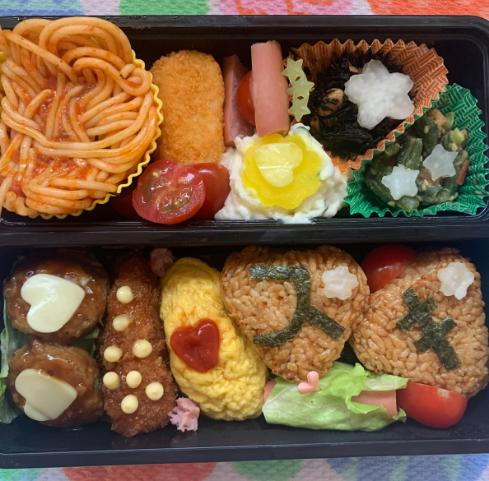

Joanna
Curried potatoes, tandoorispiced chicken, steamed carrots, and a side salad with fried onion bits and roasted sesame seed dressing.

Two pan-fried onigiri with seaweed spelling “I like you” in Japanese. Mini omelette with ketchup, chicken fingers, and two hamburger steaks topped with cheese. Three different kinds of side salads and leftover pasta, all decorated with lettuce, tomatoes, and cut-out cheese and pickled daikon.


Adam
Pickled plum rice, yangnyeom chicken, cheese-filled pumpkin croquettes, spinach and bacon omelet, and sweet potato salad.
Jenny
Rice with homemade hamburg with some tako sausages and an over-easy egg.

Canzada
Leftover chili beans and cornbread muffins.

Leftover hamburg steak over barley rice, broccoli, and cheese.

Each box is a reflection of the person who made it. Some are bright and colorful, others are simple and practical, but all are chosen with care.
In the end, a bento is not just a lunchbox. It is a way to nourish yourself, find comfort, and bring a little piece of home into the middle of a busy school day. And sometimes, that little box is exactly what makes the day brighter.
Taylor Hamada, a former JET Program ALT, is a Kyoto-based tour guide and school teacher supporting students with non-Japanese roots. She spends her free time buried in books, exploring Japan, and drinking matcha lattes.
People

COMMUNITY EDITOR
Marco Rice
COMMUNITY DESIGNER
Taylor Sanders
COMMUNITY COPY EDITOR
Brianne Dy
Voices of Harmony
Tokyo’s First Bilingual Choir Creates Community
Alayna Blaylock (Tokyo)






Voices ripple through the rehearsal hall of the Tokyo Repertory Singers (TRS) choir. Shoes of all colors line the genkan as members rush through the wooden sliding doors, shuffling across tatami mats to take their places atop red-patterned cushions. There are only a few minutes left until practice starts. Laughter, omiyage, and greetings in both Japanese and English fill the air. When the choir director, Brian Munguia, stands up, heads rise, and a silence falls over the group. Rehearsal has begun.
This is a typical Sunday afternoon for Brian. He is the founder of Tokyo Repertory Singers, the first bilingual choir in the city. Established in 2020, international singers living in Japan meet every Sunday in venues around northern Tokyo to socialize and sing mostly a cappella music from different cultures and languages. In a country where more than 30% of foreign residents report levels of frequent loneliness (Immigration Services Agency, 2023), TRS has become a rare space where people from across the world can find belonging.
The roots of the choir lie in Brian’s drive to keep his passion for music alive. It had always been a part of his story—he sang in choirs from a young age, played in a mariachi band in high school, and later earned a master’s degree in music. But during his time in Japan as a JET, he felt something was missing.
“Coming to Japan, you know, I knew I wanted to keep up with music, but I wasn't really quite sure about how to go about that.” After feeling more confident in his Japanese, Brian joined several choirs. He enjoyed singing again, but began to miss the variety and diversity in the music he sang.
“A lot of the repertory that a lot of the Japanese groups are singing is primarily in Japanese,” he explains. “That’s what's most accessible to them—coming from a background of having a lot of variety in the music that I was singing in, different eras, different languages—that was a big thing for me.”
His solution was to create a choir that was both international and accessible. Today, TRS has grown from just eight members at its debut to around 40 singers representing countries including, but not limited to South Africa, the UK, the Philippines, France, Germany, and Japan. Rehearsals are conducted in both English and Japanese, with Brian switching fluidly between the two languages to make sure everyone can listen and contribute comfortably.
Brian says, “Even if [the choir members] are not fluent in English or they're not fluent in Japanese, if they know a little bit of one or the other, that sort of opens the door that we come in—where we can share a bit of our cultures with one another.”
For Max, a teacher from South Africa, the choir became an anchor where passion and community met. He reflects on his worries before arriving in Japan. “My biggest worry was how I'd adjust to Japanese society—how I would be treated as a black South African man. That's something I worried about a lot, and so did my family.”
For many members—Japanese and foreign alike—the choir is more than just music. Members are actively connecting with each other all year long.
Friendships spark over postrehearsal coffee runs, ohanami picnics and gift exchanges, and casual meet-ups. Gayatri, a lawyer from the UK, took “a leap of faith” and invited everyone to her house for New Year's last year. Reflecting, she says, “I think making friends as an adult is hard. You’re not as surrounded by the kind of people who have similar interests to you. Being proactive, carving out time for things is important.”

She says that the choir gives her a more personal community. “I have my set friends, my work friends, and that's kind of built in. But I think joining the choir is kind of like the community that I've chosen for myself.”
Max spent the first three months going to bars in Shibuya speaking to strangers to make friends. “The pain of being lonely in Japan is worse than the awkwardness of talking to strangers,” he says.
When he found TRS, Max saw the chance to join as “an opportunity to find some sort of community in Japan, doing something [he] loved: singing.”

Christine, a second-year ALT from Hawaii, also appreciates the closeness of the choir. Her last choir had 80 members while TRS has 40. She thinks that being in a small and growing choir has made her feel a deeper connection to it all. “Brian has really. . . encouraged us all to build a community, whether it's talking during breaks, welcoming visitors, or hanging out outside of rehearsal, but everyone contributes to the choir,” she says. “Not just in music, but in socializing—and just in building the community.”




The choir also stands out musically. Brian introduces members to a “movable Do” solfège system—a less common approach in Japan that helps singers without piano backgrounds practice more easily and improve their intonation.
For members like Max, this training is novel and very valuable. He says, “I had never sung Solfège prior to joining TRS. Back home, there are far fewer opportunities for people to learn Music Theory. I am learning to appreciate what makes Japanese Choral Music so unique.”
He also makes sure the repertoire reflects the diversity of the group TRS has performed pieces in Mandarin, German, Xhosa, and Tagalog, alongside Japanese and English works.
Now entering its fifth year, TRS continues to grow both in size and spirit. For Brian, the greatest reward isn’t just the performances, but the bonds that have formed along the way. “I'm just very glad that the group has grown as much as it has. I didn't think it would get this big. . . Just seeing everybody getting closer and putting in more effort so that they can better contribute to their community and support each other. . . That's made all the difference these past few years.”

As for anyone living or coming to Tokyo, Japan who is curious about joining? Brian has one final invitation: “If anybody wants to come join the group, especially tenors and bases, feel free to reach out, schedule a visit, and see if the group is a good fit for you!”
You can find out more about TRS here: https://www.tokyorepsingers.com/en

Alayna Blaylock is based in Tokyo where she spends her free time darting between cafes, karaoke booths, and cute shops. She has a habit of turning every weekend into a mini adventure—whether that’s fast walking to the new flower viewing, pondering art that she doesn’t really understand, or just lounging with good company and better food.








http://connect.ajet.net/
connect.editor@ajet.net
@ajet_connect
https://www.facebook.com/ajetconnect/
CONTRIBUTING TO
CONNECT is a magazine for the English-speaking community in Japan, by that very community. Everyone is welcome to write, no matter your experience or style! If you have an idea you want to see in these pages, please reach out to our Head Editor, or any of the amazing Section Editors. We'll work with you to make it the best it can be and share it with our audience of thousands. Whether it's an essay, an interview, infographics, great photo spreads, or even just your favourite recipe— reach out to us!
Contact the Head Editor of CONNECT, Mike Taylor, at connect. editor@ajet.net, with your submissions, comments and questions.
ARTICLES
Write about something you're doing, something you love, or even just a cool piece of history that you're interested in. Tell us a story.
SPOTLIGHT
Tell us about someone in your community who is doing something neat and noteworthy. Cooks, collectors, calligraphers— we want to hear about the inspiring people around you!
PHOTOS
If you're an aspiring photographer and want your work published, please get in touch with our Head Designer, Renee Stinson at visualmedia.connect@ajet.net
COMMENTS
Let us know what you think. Interact with us on Facebook, Twitter and issuu.com.
CONTRIBUTORS PAGE
Have an article you want to share? Join our Contributors Page on Facebook to stay connected with the team so you can share your adventures whenever story strikes!
Interested in contributing to CONNECT? Want to stay up-to-date on interview opportunities, photo requests, and CONNECT announcements? Get involved with CONNECT by contacting our current CONNECT staff and reading about the possible positions here.
You can also like us on Facebook, follow us on Instagram, and interact with the magazine via CLIP at ISSUU
